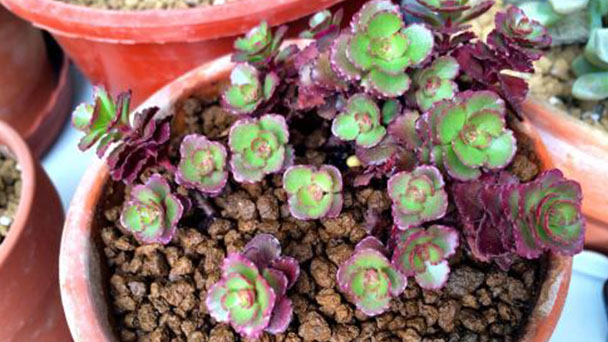How to grow Sedum spurium
Written by Maggie
Dec 02 2020

In the process of breeding Sedum spurium, mixed soil of peat, vermiculite and perlite can be selected as the culture soil. Adequate light treatment should be given every day during the growth period, and the temperature should be controlled at about 20 ~ 30℃. In the spring and autumn and winter festivals to maintain the principle of not to do not water, water is watered thoroughly. When the temperature is above 35℃ or below 5℃, the amount of water will be reduced.
Sedum Spurium picture

I. The cultivation method of Sedum Spurium
1. Requirements for basin and soil
Sedum spurium prefers to grow in soil that is breathable and loose and drained. The red pottery basin that is breathable can be chosen when family potted, fill later a few culture soil, basically give priority to the mixed soil of peat soil, vermiculite, perlite. Before the basin on the bottom pad of some bone powder or decayed organic fertilizer particles, in order to serve as long-term fertilizer.
2. Get plenty of light
The Sedum spurium prefers warm, sunny conditions. Give adequate daily light treatment during growth. Also control the temperature in 20 ~ 30℃ or so. Good light and a wide temperature difference make the stems and leaves more colorful and the plant shape more compact and beautiful. After entering winter, it is transferred to indoor cultivation.
3, suitable for watering
Watering management is one of the methods and precautions for Sedum Spurium. Sedum Spurium prefers to grow in moist conditions. In the spring and autumn and winter festivals to maintain the principle of not to do not water, water is watered thoroughly. Keep the plants in a cool place during the summer and keep the air high in humidity. When the temperature is above 35℃ or below 5℃, the amount of water will be reduced.

Matters needing attention for breeding Sedum spurium
1. Shallow potted plants
Because the root system of Sedum spurium is shallow, try to plant it in shallow pots. If you choose too large a pot, it will affect the growth of the plant. After that, they should be changed according to the growth of the plant to facilitate the normal growth of the root system.
2. Proper nudity
During growth, the lower leaves shed to varying degrees over time, which is a normal metabolic phenomenon. When the nodes are bare, they can be trimmed to encourage branching and new growth.

Latest Updated
- Benefits of Bugleweed - 7 Science-backed Health Benefits
- Bugleweed Dangers & Side Effects - Is It Poisonous?
- How to Plant Evergreen Trees - What You Should Know
- When to Plant Evergreens - Grow Guide for Evergreen Trees
- 12 Wonderful Evergreen Shrubs for Your Garden
- 12 Popular Evergreen Plants with Pictures for Beginners
- When And How To Prune A Lilac Bush Like a Pro
- How to Grow & Care for Lilac Vine (Hardenbergia Violacea)
- Japanese Lilac Tree (Syringa Reticulata) Care & Propagation Guide
- Shumard Oak Pros and Cons - What to Know
Popular Articles
- Winter maintenance of Antirrhinum Majus
- How to Grow Terminalia Mantaly Tree
- How to Grow and Care for Crossostephium Chinense
- How to grow Antirrhinum Majus in spring
- Peristeria Elata (Dove Orchid) Profile: Info & Care Guide
- Underwatered Snake Plant (Sansevieria Trifasciata) - Signs And How To Fix
- How to Care for Brazilian Jasmine Plant (Mandevilla Sanderi)
- How to Grow & Care for Graptopetalum Purple Delight in Summer
- Rosa Chinensis (China Rose): Plant Growing & Care Tips
- How to Care for Baby Sun Rose (Aptenia Cordifolia)